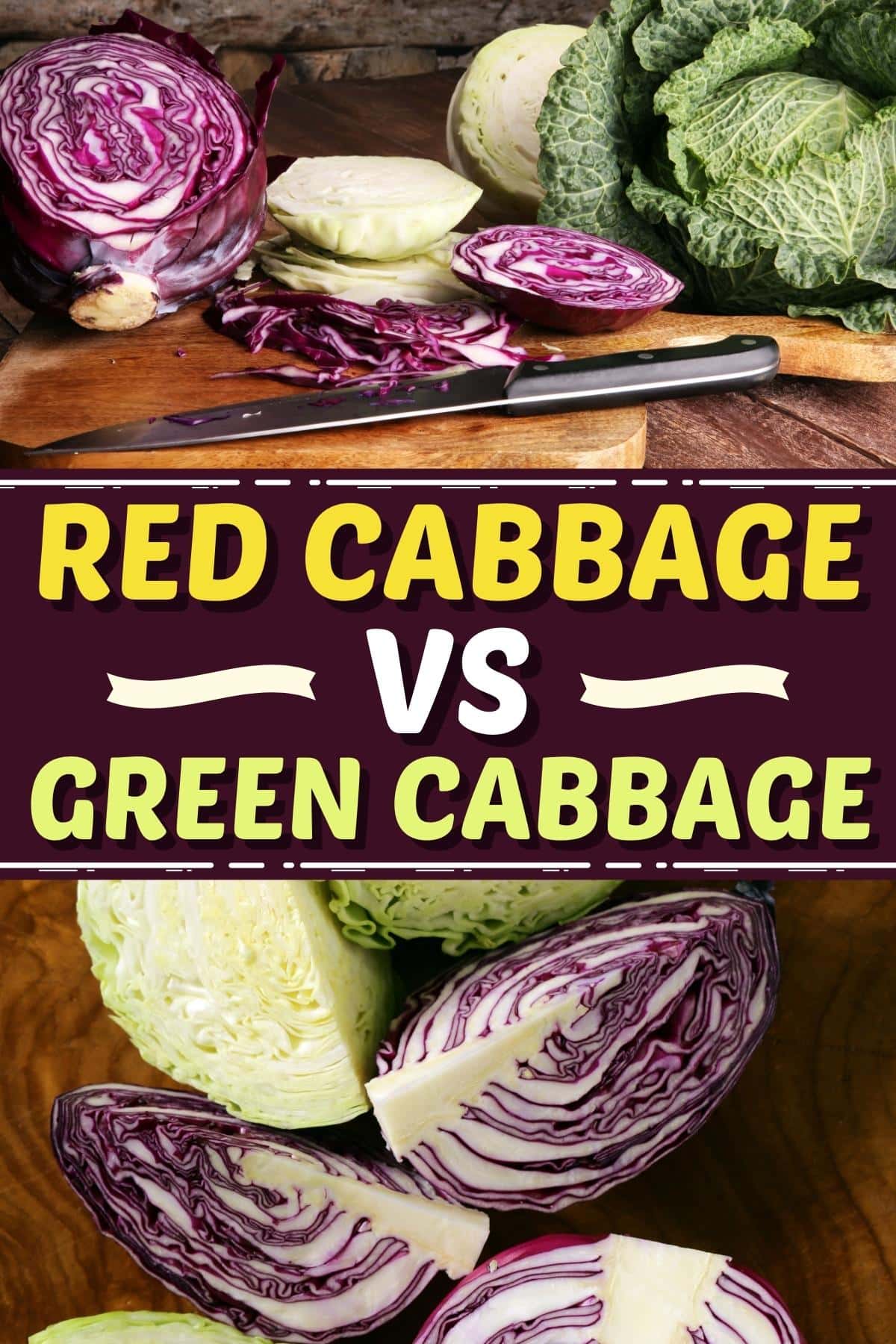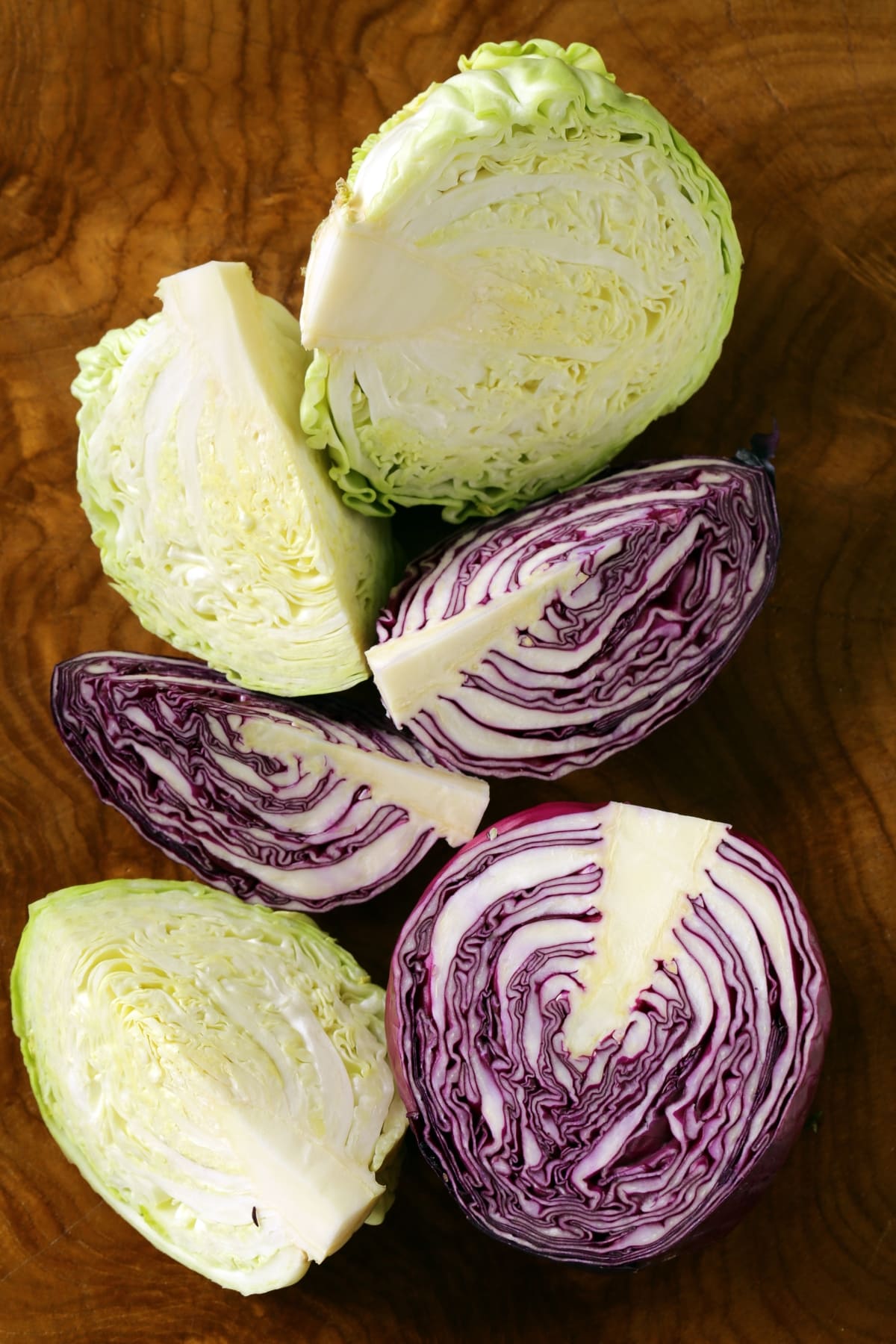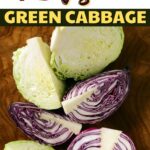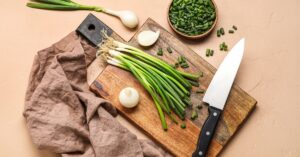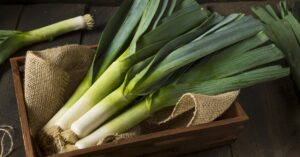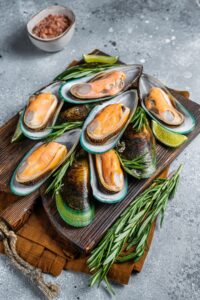Red cabbage and green cabbage differ in color, first and foremost. Red cabbage has a purple-red hue, while green cabbage is green.
But beyond their vibrant colors, these cruciferous veggies boast distinct flavors. They also have their own unique nutrients and culinary applications.
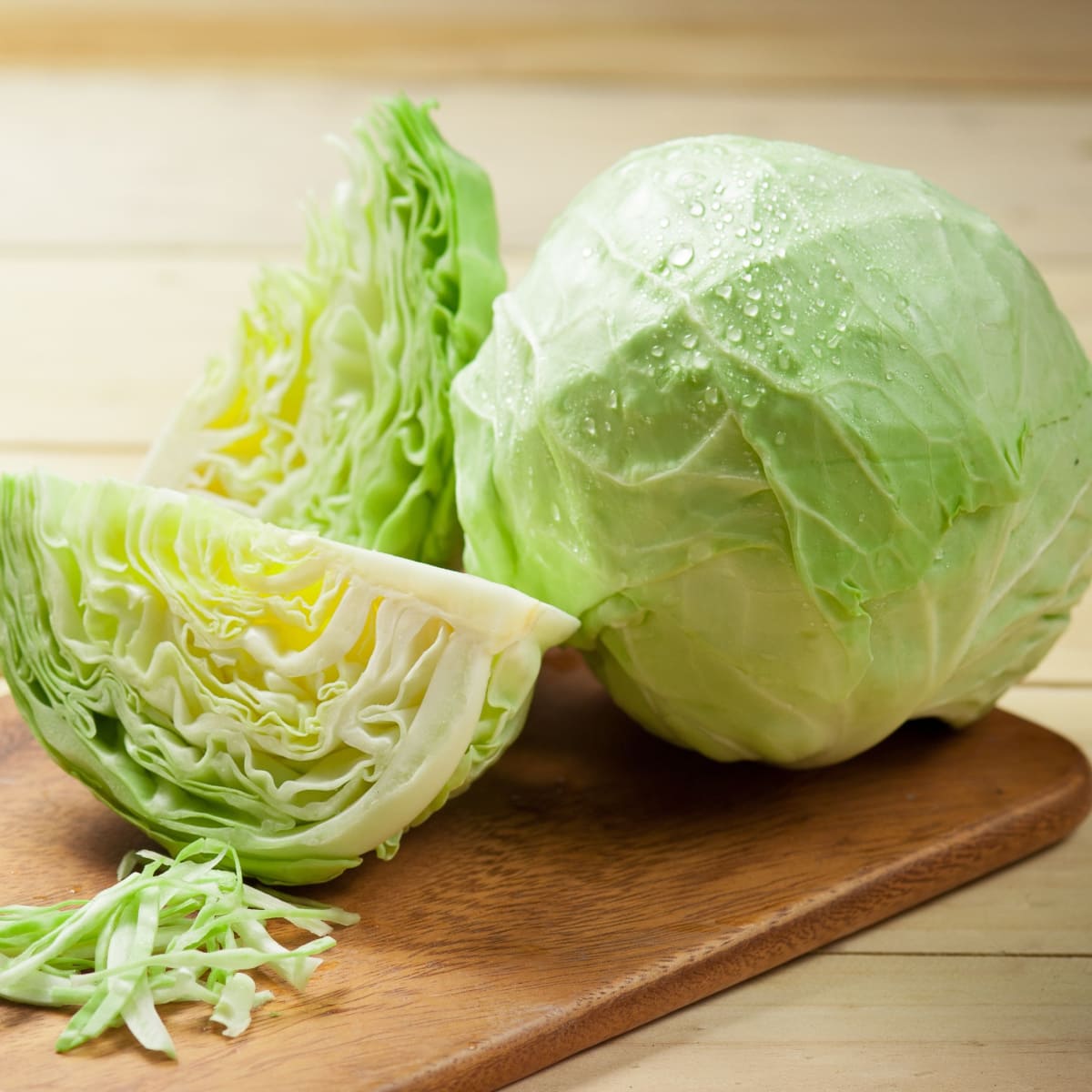
Let’s dive into the red cabbage vs. green cabbage debate. We’ll explore the individual attributes of both. (Their flavor profiles, nutritional facts, and more.)
Whether you’re a cabbage connoisseur or a curious cook doesn’t matter. There’s a lot of great information here for everyone.

Red Cabbage vs. Green Cabbage
Before we get into their differences, let’s look at an overview of each.
Red Cabbage
Scientific name: Brassica oleracea var. capitata f. Rubra
Red cabbage isn’t actually red. It’s more of a reddish-purple color. It’s round, dense, and heavy, with compact white inner leaves and purplish outer ones.
You can eat it raw, stir-fried, pickled, roasted, sauteed, boiled, or steamed. It has a unique taste. It’s both flowery and peppery. It’s sweet and tangy when roasted.
People also use it to dye other foods (and medicines) red. It’s high in vitamins A and C and iron.
Green Cabbage
Scientific name: Brassica oleracea var. capitata
Green cabbage is one of the world’s oldest veggies. It features a similar shape to red cabbage but is slightly larger.
It’s heavy and dense with tightly compacted leaves. In appearance, the primary difference is it’s green.
Like red cabbage, it has a slightly peppery taste. However, it’s less floral and more sweet. The longer you cook it, the sweeter it gets.
It can be prepared in many of the same ways as red cabbage. You can also eat it raw or mixed raw into slaws and salads. The large, sturdy leaves can be used as wraps for various fillings.
It’s a great source of water and has plenty of vitamins C and K. Overall, it’s less nutritious than red cabbage.

Differences Between Red Cabbage and Green Cabbage
Now, let’s look more in-depth into the differences between red and green cabbage.
Uses
Red and green cabbage can be used interchangeably in many recipes. However, that doesn’t mean there aren’t specific recipes more suited for one or the other.
For example, red cabbage tastes better when pickled or roasted. But green cabbage does better than red when steamed.
Green cabbage leaves are often used as wraps, similar to lettuce wraps. Red cabbage leaves aren’t as sturdy and are rarely used as wraps.
Nutritional Information
As mentioned, red cabbage is more nutritious overall than green cabbage. As you may know, fruits and veggies with vibrant colors are often excellent sources of vitamin A.
Red cabbage is no exception. It’s loaded with vitamin A! A single cup of red cabbage contains 33% of your daily recommended dose of the vitamin. (That’s a whole third!)
A cup of green cabbage, on the other hand, contains only 3%.
Red cabbage also has more vitamin C and more iron. Green cabbage is a pretty good source of vitamin C, too, but it doesn’t contain as much as red cabbage.
Red cabbage is also full of anthocyanins. They’re great for losing weight, improving memory, and fighting cancer.
Green cabbage is higher in vitamin K than red cabbage. Most leafy green veggies are good sources of vitamin K, and that’s certainly true of green cabbage.
One cup of green cabbage has 57% of the daily recommended dose. Red cabbage has less, but it still boasts a respectable 28%.
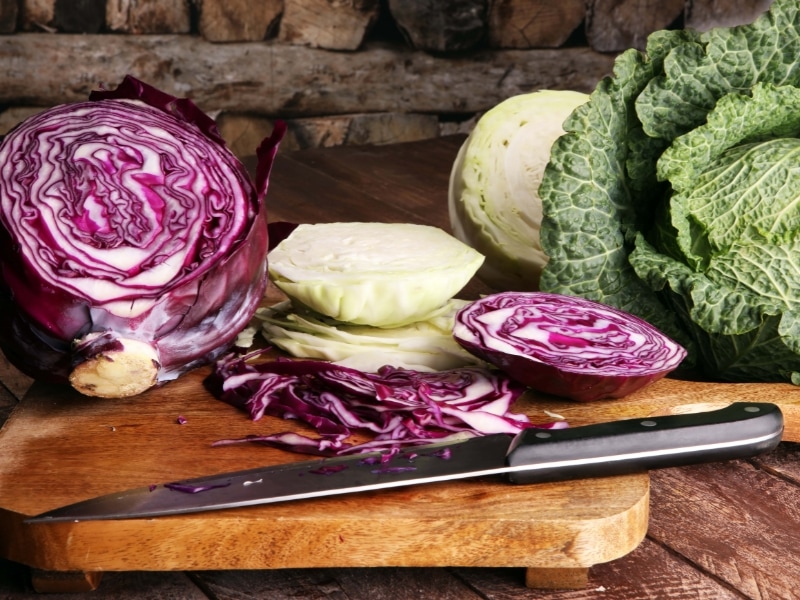
Size and Taste
Of the two cabbage varieties, green cabbage is larger. The size difference between them isn’t huge, but it’s enough to be noticeable.
As for taste, they’re both somewhat peppery. However, as mentioned, green cabbage is sweeter. Red cabbage has a more floral-like flavor.
Green cabbage also gets sweeter the longer you cook it. Both cabbage varieties have fan-shaped leaves, but green cabbage leaves are larger.
They’re both equally crisp and crunchy.
Special Features
One notable thing about green cabbage is it’s one of the world’s oldest vegetables. It was a popular food source in China as early as 4,000 BCE. Red cabbage hasn’t been around quite that long.
But red cabbage has its own unique trait. I mentioned earlier people often use it to dye other foods and medicines. That’s totally true.
But did you know you can even use it yourself? If you want to dye clothes or other items, here’s how:
- Finely chop the cabbage and place it into a dye pot.
- Add enough water to fully cover the cabbage.
- Add a single tablespoon of salt for every 1/2 cup of cabbage.
- Simmer the mixture for 30 minutes.
- Strain the cabbage, squeezing it tightly to remove all the dye.
- Use the purple dye however you like!
You can also tweak the color a little. Add 2 tablespoons of white vinegar to mellow it to a bright pink color. Or add 1 tablespoon of ammonia to make it blue.
